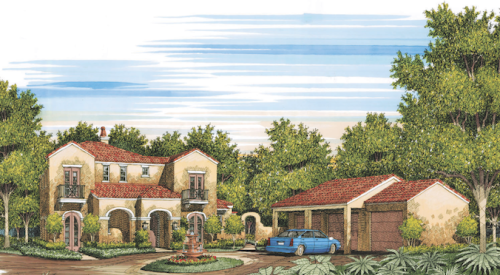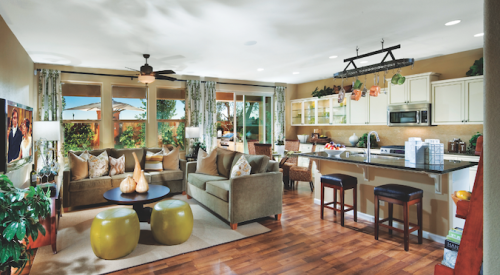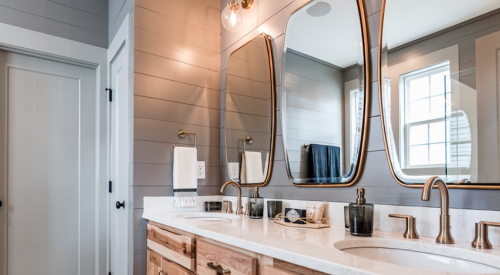A decade ago, Faith Popcorn identified a broad consumer trend she called "cocooning." Americans wanted homes to serve as sanctuaries, retreats from the outside world. Today, new consumer research shows that much of what she identified still holds true but with an important twist.
Home buyers still seek safe, secure havens. But they also seek homes that enhance connectedness with family, friends and the surrounding neighborhood, says consumer research specialist J. Walker Smith, president of Yankelovich Inc. in Chapel Hill, N.C.
Homes "are not defensive or self-indulgent anymore," Smith told PCBC attendees last month in San Francisco in presenting Yankelovich Monitor's new Home Vision research. "Instead, today's homes should embrace family members and others in a safe setting abuzz with activity and engagement." Smith describes this trend as "hiving," a blend of home, family and social interaction that Americans seek in today's post-Sept. 11 world. The Yankelovich research suggests that hiving is a response to anxiety people feel as a result of a weak economy, the war on terrorism, the war in Iraq and a number of corporate and institutional scandals. It plays out in home design in many ways, Smith says.
A hiving home offers convenient spaces for planning and launching family and group activities. The kitchen command center with telephone and computer connections makes perfect sense as a response to this trend. So, too, do specific project rooms and garage organizer systems that create work spaces devoted to gardening and other outdoor pursuits.
A hiving home offers an open floor plan that works well for casual, last-minute entertaining of family and friends. Large kitchens and great rooms remain a must, Smith says, with an emphasis on dining. Americans say they are dining at home more and eating with family an average of 4.4 nights per week.
The hiving trend means less time in front of the television and more time playing board games and other low-tech parlor games. Median time watching TV per week has decreased from 23 hours in 1998 to 19 in 2002. Window seats and nooks offer places for parents to read with children. A kitchen alcove with bench seating might double as a breakfast area in the morning and a homework/game area at night.
Desire for centralized home control technology waned during the past few years. While overall technology is hot, interest in automation went from 39% in 2000 to 34% one year later. It does not mean you should not offer automation, but you should pitch it within the context of simplifying life and adding to connections.
New homes should embrace the changing definition of family and the increasing ethnic diversity of the U.S. home buyer. Twenty-six percent of Hispanic respondents to the Home Vision survey said they planned to purchase a home during the next 12 months versus only 9% of white buyers. Smith says builders should consider offering homes that cater to large extended families with two of everything: Two kitchens, two laundry rooms and two living rooms will be demanded by some. Builders also should be open to the notion of all types of "families," including a large group of couples with no children.
|
|
Describes 'Ideal' Home
|
|
1. Safe haven -- 86%
2. Desirable neighborhood -- 70%
3. Place for rest of life -- 68%
4. Good investment -- 66%
5. Hub of activity for friends and family -- 53%
6. Expresses individuality -- 52%
7. No worries about maintenance -- 42%
8. Secluded -- 26%
9. Latest technology built in -- 14%
10. Showplace -- 12%
Source: Yankelovich Monitor Research for PCBC 2003
|
|












